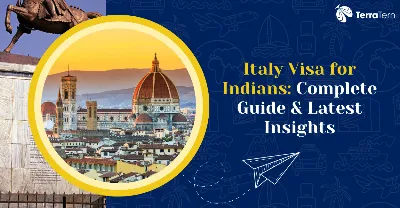Key Highlights
- Latest Italy Visa for Indians News & Key Facts (2025)
- Types of Italy Visas for Indian Citizens
- Latest Italy Visa Requirements for Indian Citizens in 2025: Updated
- Itlay Visa Financial and Medical Requirements for Indians in 2025
- Italy Work Visa for Indians: Latest Process, Quota & Tips 2025
- How to Apply for an Italy Work Visa from India?
- Italy Study Visa Requirements for Indian Students in 2025
- Common Italy Visa Rejections & How to Avoid Them in 2025? Experts Insights
- Italy Visa Processing Time, Fees & Validity in 2025
- Conclusion
Italy is a country of history, art, and indescribable natural beauty that can still attract the hearts of world travellers. The dream of moving to Rome and seeing the ruins, moving through the canals of Venice or the delightful pizza of Naples is no longer a distant dream to Indian citizens anymore. Nevertheless, the complicated system of visa rules may sometimes appear overwhelming. In this definitive 2025 guide, the process of applying for a Italy visa for Indians is demystified for Indian citizens, giving them a clear picture of the type of visa, a list of requirements, and other important changes.
Latest Italy Visa for Indians News & Key Facts (2025)
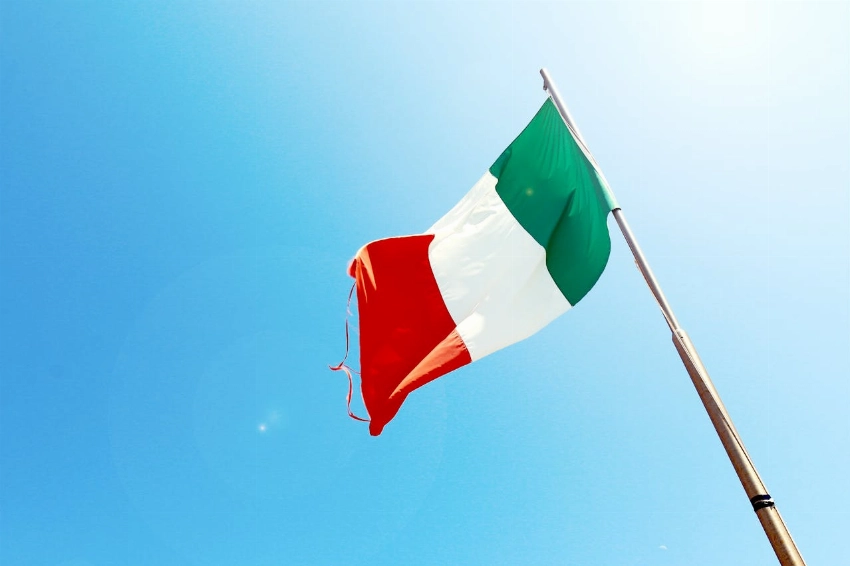
The field of Italian immigration is changing; hence, new opportunities are emerging to Indian nationals. The Italian government has shown serious interest in getting foreign talent and visitors, and this is seen through several developments:
-
Italian government: In 2023-25, the government of Italy established a 452,000 work permit quota with non-EU citizens on which it will be the largest ever intake.
-
Italy A Digital Nomad Visa was first introduced in Italy in 2024, which was the first time remote Indian workers could gain access to it.
-
Most of the visa procedures take an average of 15-30 working days, though it may even take longer during high seasons.
-
At the specified centers in India, VFS, biometric data of applicants (fingerprinting and photograph) is required by the company as a mandatory procedure.
-
The student in India who studies in Italy can now do part-time jobs of 20 hours per week during the period when they are studying, and this is helpful as it brings revenue as well as experience to them.
-
In Italy, the mandatory requirement is that all Italy visa for Indians applicants must have a travel insurance policy that must cover at least 30,000 Euros in case of a medical emergency.
-
The Schengen visitor visa is issued to Indians and is valid up to 90 days within six months, which means it can be used in short-term visits to the Schengen States.
-
What is important to keep in mind is that there is no visa-on-arrival option: all Indian citizens should get a customised visa first before their arrival to Italy.
-
The long-term holders of a visa (work, study) should use the first 8 days of stay to submit a residence permit application, as it is an essential procedure for legal residence.
-
There have also been increased scholarship opportunities to Indian students pursuing their studies in Italy, such that higher education is affordable, given that some universities in Italy are offering tuition waivers of up to 100 per cent in some cases to specific courses of study.
Italy visa for Indians regulations may be tricky; however, there are higher quotas, digital nomad Italy visa for Indians, and simplified procedures, so 2025 may be the time when Indians want to study, work, or visit Italy like never before! Here you will get all the details you want.
Also Read: Apply Now: Italy's New Digital Nomad Visa Welcomes You and Your Family
Types of Italy Visas for Indian Citizens
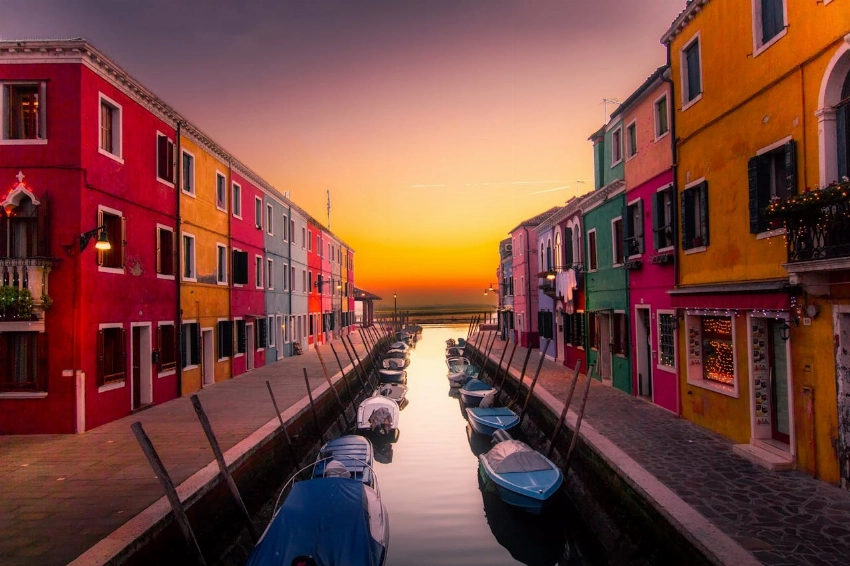
The most important thing is to know the different categories of visas that exist in your quest to apply. This will be divided into each type of Italy visa for Indians so that you can tell which one is applicable to your purpose i.e. tourism, study, business or work. All the types of Italy visa for Indians are related to particular intentions and they have measures and conditions of your presence in Italy.
-
Tourist and Business Visa (Schengen Visa-Type C)
Schengen short stay visa (Type C ) is for Indians who are planning to travel to Italy for a short term. With this Italy visa for Indians, it is not only possible to visit Italy but also the Schengen countries as a whole, thus enabling one to travel to multiple destinations in the zone. It is perfect when someone wants to stay for a short period, when they want to do leisure travelling or go and see family or friends or even when they wish to attend meetings and conferences.
This Italy visa for Indians will allow one to stay a maximum of 90 days in any 180 days. Among the Indian candidates, the procedure entails doing a complete set of documents, which consists of a valid passport, flight tickets, evidence of accommodation, and solvency. To do good business, an Italian business company's invitation letter stating the purpose of the visit and time frame is also desired. The application is to be applied at the VFS Global centre servicing the Italian Consulate with jurisdiction over the residence of the applicant in India.
-
Italy Work Visa for Indian Citizens (Type D)
Indian citizens who want to pursue a future of working in Italy cannot do so without a long-stay work visa or a Type D visa. This type of Italy visa for Indians is specifically aimed at attracting those people who are provided with a certain job in Italy and have an invitation from the Italian employer. Work visa application is more complex than a short-stay visa, because it is closely associated with the Quotas of work permits in Italy, referred to as Decreto Flussi.
The eligibility of an Indian citizen to receive the Italy work visa for Indians is strongly dependent on the ability to receive a Nulla Osta (work permit clearance) issued by the Italian immigration authority, and the process is triggered by the Italian employer. This Nulla Osta attests that a non-EU worker can be allowed to work in Italy within the existing quota on immigration. New quotas of 2023-2025 are much higher, and now it is about ten times more non-EU workers. A large number of quotas are devoted to Indian citizens, which makes 2025 a good year to migrate in terms of work. The person making the application should specify the reason they want the job, submit the Nulla Osta, and respect a rigorous application procedure that usually includes interviews and verification of many documents.
-
Italy Student Visa (Type D)
Indian students who wish to undertake an academic program in Italy and it will take a duration of over 90 days should apply to the National Visa (Type D) so as to study in Italy. Italy has become one of the most popular destinations of higher studies with a mixture of quality universities, various courses and rich culture. This type of visa includes all educational activities, such as university degree, language course and professional training.
An Italian student visa for Indians has the basic requirements of an admission confirmation letter from a recognised Italian school, a document showing enough money to sustain the stay in Italy, and funds to cover the school fees, a residential plan in Italy and health insurance cover. Students should also be able to prove their proficiency in the Italian or English language, according to the chosen course language. The process usually includes pre-enrolment with the University portal, submission of the application under the Italian visa for Indians under a VFS Global service point and an interview at the Italian Consulate. The earlier amendment of part-time employment of up to 20 hours per week by the Indian students is a great plus towards controlling living expenses.
-
Other Visa Types (Medical, Transit, Family Reunion)
Although tourist, work, and study Italy visa for Indians are the most wanted ones, Italy has other available types of visas that meet the specific demands of Indian citizens. These are likewise important but not so common Italy visa for Indians:
-
Medical Visa: For those who visit Italy to obtain medical services. This will demand a letter of confirmation of treatment at an Italian medical facility, a description of the healthcare condition and material evidence of finances that will sustain the treatment cost and living expenditure.
-
Transit Visa: This type of Visa is required by those individuals whose travel necessitates travelling through an airport in Italy, yet not being in the Schengen Zone. This is normally for short stays and may be applied to certain nationalities. Normally, the citizens of India do not need an airport transit visa as long as they stay in the international transit zone.
-
Family Reunion Visa: It is a visa to be used by Indian nationals who wish to join family members who are already legally settled in Italy. It is necessary to prove the family relationship and the possibility of the Italian resident to provide accommodation and economic support, as well as a Nulla Osta de family reunification, issued by Italian authorities.
Different requirements and procedures are obtainable in each of these categories. One should also check the list of required documents on the official page of the Embassy in Italy or on the corresponding VFS Global centre in India to obtain complete and current lists of the documents one has to provide.
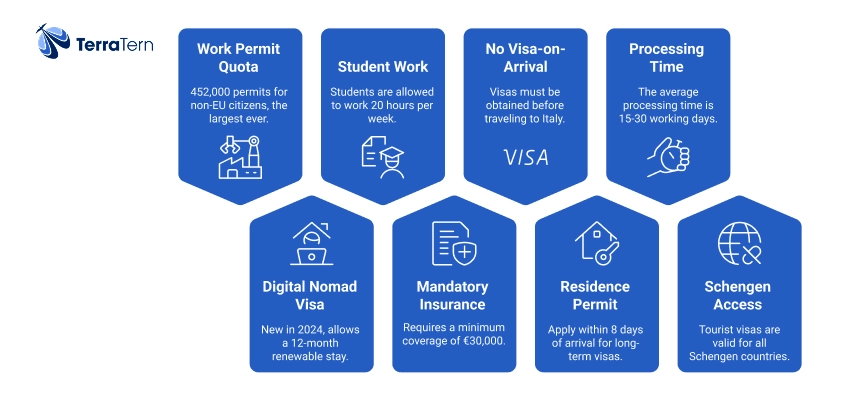
Latest Italy Visa Requirements for Indian Citizens in 2025: Updated

Obtaining the Italian Italy visa for Indians may require scrupulous planning and a strict set of Italy visa requirements for Indian citizens that should be followed and must be filled with documentation and finances. The section contains a summary of all the documents and conditions according to the type of Italy visa for Indians, so that the applicants do not miss an important document and simplify their application procedure until 2025. Consideration in the collection of these requirements is the most important to prevent delays or refusals. Let’s know more about the Italy visa requirements for Indian citizens:
Document Checklist for 2025
The following is an essential checklist of documents required for various Italy visa for Indians. Please note that while this covers the common requirements, specific Italy visa for Indians types may have additional demands.
-
Valid Passport: Original passport valid for at least three months beyond the intended stay in the Schengen Area, issued within the last 10 years, and containing at least two blank pages. Previous passports, if any, should also be submitted.
-
Visa Application Form: Duly filled and signed application form, specific to the Italy visa for Indians type (Schengen or National).
-
Photographs: Two recent passport-sized colour photographs (3.5 cm x 4.5 cm) with a white background, meeting Schengen photo requirements.
-
Cover Letter: A personal letter explaining the purpose of the visit, a detailed itinerary, and the intention to return to India.
-
Travel Itinerary: Confirmed round-trip flight bookings and proof of accommodation (hotel reservations, rental agreement, or invitation letter from a host in Italy).
-
Travel Insurance: Mandatory travel medical insurance with a minimum coverage of 30,000 Euro for emergency medical expenses, hospitalisation, and repatriation, valid for the entire duration of stay in the Schengen Area.
-
Proof of Financial Means: Bank statements (last three to six months), income tax returns (last two to three years), salary slips, or other documents demonstrating sufficient funds to cover the entire trip. The minimum required daily amount for subsistence varies by length of stay.
-
Proof of Civil Status: Marriage certificate, birth certificates of dependent children, if applicable.
-
Proof of Employment/Study/Business:
-
For Employed Individuals: Letter from employer stating position, salary, approved leave, and return commitment.
-
For Self-Employed Individuals: Business registration, company bank statements, and ITRs.
-
For Students: Admission letter, a bona fide certificate from an Indian institution, and a no-objection certificate from parents if a minor.
-
For Retirees: Pension statements.
-
No Objection Certificate (NOC): If applicable, from parents (for minors) or employer.
-
Visa Fee Payment Receipt: Proof of payment of the non-refundable visa application fee.

Itlay Visa Financial and Medical Requirements for Indians in 2025
Beyond the general document checklist, specific financial and medical stipulations are critical for Italian visa applications from India, updated for 2025.
Financial Requirements
Applicants must demonstrate sufficient means of subsistence to cover their stay in Italy and their return journey. While the exact figures can fluctuate, the Italian government sets minimum thresholds. For short-stay Schengen visas, applicants generally need to show access to a specific daily amount in Euro, which varies based on the duration of stay. For long-term Italy visa for Indians, like study or work, the financial proof needs to be more substantial, often requiring bank statements showing consistent funds or proof of scholarship/guaranteed income from employment. As of recent updates, the minimum required for students is around 534.41 Euro per month for the intended period of stay, or 6947.33 Euro for one year. These figures are subject to change, and it is crucial to verify the latest amounts with the Italian Consulate or VFS Global.
Medical Requirements
Travel medical insurance is a strict and non-negotiable requirement for all Italy visa for Indians. The insurance policy must meet the following criteria:
-
Minimum Coverage: At least 30,000 Euro (or equivalent in Indian Rupees).
-
Scope of Coverage: Must cover all expenses that might arise in connection with emergency medical treatment, hospital care, and repatriation for medical reasons or death.
-
Validity: Must be valid throughout the entire Schengen Area and for the full duration of the intended stay. For multiple-entry visas, the insurance must be valid for the first planned entry, with a commitment to purchase subsequent insurance for future trips.
Failure to meet these financial and medical requirements is a common reason for Italy visa for Indians rejection, emphasising the importance of securing adequate funds and comprehensive travel insurance.
Italy Work Visa for Indians: Latest Process, Quota & Tips 2025

For Indian professionals seeking to advance their careers in Italy, understanding the Italy work visa for Indian professionals is crucial. This section provides the latest insights into the work permit quotas, eligibility criteria, the stepwise procedure for making your application in 2025, and an overview of various types of Italy work visa for Indians. The increased quotas for non-EU citizens in 2025 present a significant opportunity.
Types of Work Visas (Employment, Self, Seasonal, Blue Card, Digital Nomad)
The type of work Italy visa for Indians available in Italy has been divided into various categories depending on the cases of employment.
-
Subordinate Employment Visa (Lavoro Subordinato): This is the most common type of Italy work visa for Indian issued to individuals who have already secured a working contract with an Italian company. The employer has to apply for another clearance known as Nulla Osta (work permit clearance) with the Italian Single Desk for Immigration in Italy. The visa is normally a one-year Italy visa for Indians, which can be renewed relative to the employment contract.
-
Self-Employment Visa (Lavoro Autonomo): This Italy visa for Indians is intended for individuals who plan to self-employ themselves, open a business, or practice a specific profession in Italy. There are requirements for applicants, including having sufficient financial resources, a proper business plan, and compliance with certain professional registration requirements. The competent Italian authorities, too, are to provide a Nulla Osta.
-
Seasonal Work Visa (Lavoro Stagionale): This type of visa is issued to non-EU nationals working in seasonal services, such as workers in tourism, agriculture, among others, and there is a duration of a specific period (usually up to nine months). Such visas are given with quotas per year and must be sponsored by an employer.
-
EU Blue Card: A special work permit to highly qualified non-EU professionals. As a condition of its eligibility, one must possess a higher education certification (degree), and a prospective employer must offer to hire him or her in a high-skilled job with a minimum gross annual salary determined by the Italian government (usually above the workplace visas). A more flexible relationship should be available through the EU Blue Card to reunify with the family and to spend time in residency.
-
Digital Nomad Visa: The Digital Nomad Italy visa for Indians was launched in 2024 and applies to remote workers and freelancers who have employers or clients in non-Italian countries. The most important requirements are a university degree or at least five years of professional experience, a minimum income level of 28,000 Euro per year, health insurance and evidence of the place of residence. This kind of visa provides a 12-month stay, which can be renewed, and one can access bank and healthcare facilities in Italy. It presents a new avenue to Indian people who can work anywhere freely.
Also Read: Difference Between Tourist Visa and Visitor Visa
How to Apply for an Italy Work Visa from India?
The application process for an Italy Work Visa from India is multi-faceted and primarily driven by the Italian employer. Here’s a step-by-step guide:
-
Employer Initiates Nulla Osta
The Italian employer applies for the Nulla Osta (work permit clearance) at the relevant SUI in Italy. This is the crucial first step and can take several weeks or months. The Nulla Osta is valid for six months from its issuance date.
-
Visa Application Submission in India
Once the Nulla Osta is granted, the Indian applicant must apply for the work visa (Type D) at the Italian Embassy or Consulate General in India, through VFS Global. This must be done within the Nulla Osta's validity period.
-
Document Gathering
The applicant collects all required documents, including the original Nulla Osta, a valid passport, a visa application form, photographs, an employment contract, educational qualifications, proof of financial means, and travel insurance.
-
Biometric Appointment
Schedule an appointment at a VFS Global centre to apply, provide biometric data (fingerprints and photograph), and attend a visa interview if required.
-
Visa Processing
The Italian Consulate processes the application, typically within 20 to 30 working days. However, delays can occur, especially during peak seasons or for complex cases.
-
Visa Issuance and Travel
Upon approval, the visa is stamped in the applicant's passport. The applicant can then travel to Italy.
-
Residence Permit Application (Permesso di Soggiorno)
This is a mandatory and critical step upon arrival in Italy. Within 8 working days of entering Italy, the long-term visa holder must apply for a Permesso di Soggiorno at the local Questura (police headquarters) or a designated Post Office. This permit legalises their stay for the duration of their work contract.
Tips for Approval: Ensure all documents are complete, accurate, and translated into Italian where required. Maintain clear communication with your Italian employer regarding the Nulla Osta process. Be prepared for an interview and articulate your purpose of stay and ties to India clearly.
Italy Study Visa Requirements for Indian Students in 2025

Italy’s universities and academies offer a rich tapestry of academic programs, drawing Indian students seeking quality education and cultural immersion. This dedicated section outlines the specific requirements, application process, and new rules concerning part-time work for Indian students aiming to study in Italy in 2025. Let’s know more about the Italy study visa requirements for Indian students!
Latest Application Steps and Important Deadlines for Italy Visa in 2025
The process for obtaining an Italy Student Visa (Type D) for Indian students involves several key stages of Italy study visa requirements for Indian students:
-
University Admission: The fundamental first step is to secure an acceptance letter from an accredited Italian educational institution for a course exceeding 90 days. For many university-level programs, pre-enrollment via the University portal is mandatory.
-
Document Collection:
- Admission Letter: Original letter of acceptance from the Italian university or institution.
- Pre-enrollment Summary: If applicable, downloaded from the University portal.
- Academic Documents: Original and attested copies of all academic transcripts, diplomas, and certificates (e.g., 10th, 12th, Bachelor's degree). A Declaration of Value (DOV) or CIMEA Certificate may be required, depending on the institution and program.
- Proof of Language Proficiency: Evidence of Italian or English language proficiency (e.g., IELTS, TOEFL, CILS, CELI scores), as required by the chosen program.
- Proof of Financial Means: Bank statements (last six months), scholarship award letters, or a sponsorship letter with supporting financial documents from parents/sponsors. The minimum amount generally required is around 6947.33 Euro for one year or 534.41 Euro per month. Educational loans can be accepted if reflected in bank statements.
- Accommodation Proof: Confirmed accommodation details for at least the first few weeks or months (e.g., university dormitory confirmation, rental agreement, or host declaration).
- Health Insurance: Medical insurance with a minimum coverage of 30,000 Euro, valid for at least the first six months of stay and including repatriation.
- Travel Itinerary: Round-trip flight reservation.
- Visa Application Form: Duly filled and signed National Visa (Type D) application form.
- Passport and Photographs: Valid passport with at least two blank pages and two recent passport-sized photographs.
- Cover Letter/Statement of Purpose: Explaining the reasons for choosing the course and institution, financial support, and future intentions.
- Visa Application Submission: Schedule an appointment with VFS Global, the official Italy visa for Indians application centre for Italy in India. Submit the complete application dossier, including all original documents and photocopies.
-
Biometric Data Collection and Interview: Attend the appointment at VFS Global for biometric data submission (fingerprints and photograph). An interview may also be conducted by consular officers to assess the applicant's intent and preparedness.
-
Visa Processing: Processing times for student visas typically range from 15 to 20 working days. However, it is highly recommended to apply at least three months before the course start date, especially during peak application periods.
-
Post-Arrival Registration: Upon arrival in Italy with a Type D student visa, students must apply for a Permesso di Soggiorno (residence permit) at the local Questura or designated Post Office within 8 working days. This is crucial for legal residency and accessing public services.
-
New Part-Time Work Rules: From 2025, Indian students in Italy holding a valid student visa for Indians and a residence permit are permitted to work part-time for up to 20 hours per week during academic terms. During official university breaks, they may work full-time if offered a separate full-time contract, up to 1040 hours per year. This provides valuable opportunities for financial support and professional experience, without compromising academic commitments.
Application Process for Italy Visa for Indians
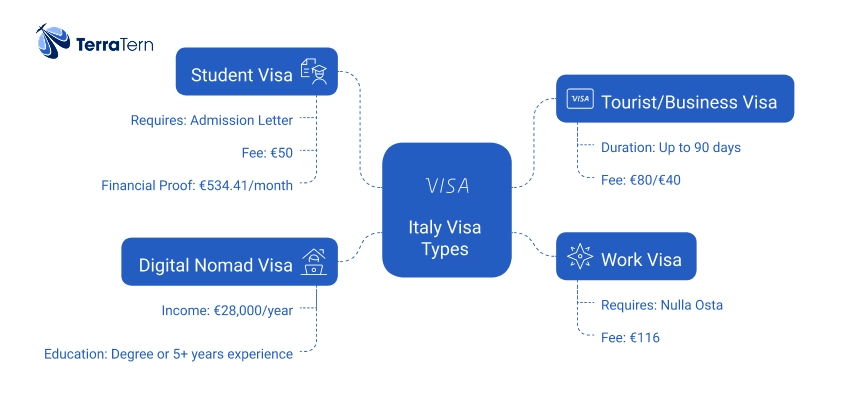
The application process for any Italian visa for Indian citizens, whether short-term or long-term, follows a standardised procedure primarily managed by VFS Global on behalf of the Italian Consulates in India. A streamlined approach ensures efficiency, but careful attention to each step is paramount.
-
Determine Visa Type: Before anything else, identify the correct Italy visa for Indians category that aligns with your purpose of visit (e.g., Tourist, Business, Study, Work, Family Reunion). The requirements and procedures differ significantly for each.
-
Check Jurisdiction: Locate the Italian Consulate General (Mumbai, Kolkata, Chennai, or Delhi) that has jurisdiction over your place of residence in India. All visa applications must be submitted through the VFS Global centre associated with that specific Consulate.
-
Gather Documents: Based on the chosen visa type, meticulously collect all required documents as outlined in the checklists provided by the Italian Consulate or VFS Global. Ensure all documents are recent, valid, and, if necessary, translated into Italian by an authorised translator.
-
Complete Application Form: Fill out the appropriate visa application form accurately and completely. For Schengen visas, this is usually the harmonised Schengen visa application form. For National (Type D) visas, a specific national visa application form is used. Ensure all mandatory fields are filled and signatures are placed where required.
-
Book an Appointment: Appointments for visa application submission and biometric data collection must be booked online through the VFS Global website. Due to high demand, it is advisable to book well in advance, especially during peak travel seasons (summer, festive holidays).
-
Pay Visa Fees: The visa application fee must be paid as per the VFS Global instructions. Fees vary by visa type and are generally non-refundable. These fees are usually paid at the VFS centre or sometimes online during the appointment booking.
-
Attend VFS Appointment and Submit Biometrics: On the scheduled date, visit the VFS Global application centre. You will submit your complete set of documents, pay any remaining service charges, and provide your biometric data (fingerprints and digital photograph). Ensure you have both original documents and photocopies as required.
-
Interview (If Required): Depending on the visa type and individual circumstances, you may be called for a personal interview at the Italian Consulate. This is more common for long-term Italy visa for Indians, as there are ambiguities in the application.
-
Track Application Status: After submission, you can track the status of your application online using the reference number provided by VFS Global.
-
Passport Collection: Once the decision is made, you will be notified to collect your passport from the VFS Global centre.
-
Processing Timelines: While standard processing times range from 15 to 30 working days, these are indicative. Factors like the volume of applications, completeness of documents, and the need for further verification can extend this period significantly, sometimes up to 45-60 days or more. It is always recommended to apply well in advance of your intended travel date.
Common Italy Visa Rejections & How to Avoid Them in 2025? Experts Insights

Facing an Italy visa for Indians rejection can be disappointing, but understanding the common pitfalls can help you avoid them in your application. Most rejections stem from preventable errors or insufficient documentation.
Here are the main reasons for refusals and actionable tips to ensure your application stands a better chance:
-
Incomplete or Incorrect Documentation:
-
Reason: Missing essential documents (e.g., valid passport, flight bookings, accommodation proof, insurance), submitting outdated forms, or providing inaccurate information.
-
Avoidance: Meticulously follow the official checklist provided by the Italian Consulate or VFS Global for your specific visa type. Double-check all forms for accuracy and ensure all required fields are completed. Always provide original documents where requested and legible photocopies.
-
Insufficient Proof of Financial Means:
-
Reason: Failing to demonstrate adequate funds to cover your stay in Italy and your return journey, or providing bank statements that do not show consistent financial activity.
-
Avoidance: Ensure your bank statements clearly show sufficient funds to support your declared trip duration. Provide recent statements (typically last 3-6 months) stamped and signed by the bank. If sponsored, include a detailed sponsorship letter and the sponsor's financial documents and ID proof.
-
Unclear Purpose of Visit or Travel Itinerary:
-
Reason: The consular officer is not convinced about the genuine purpose of your visit, or your travel itinerary lacks detail or appears inconsistent.
-
Avoidance: Provide a clear, detailed cover letter explaining your visit's purpose, a day-by-day itinerary (even for leisure), and confirmed bookings (flights, hotels). If visiting family/friends, include an invitation letter with their contact details and address. For business, provide a comprehensive invitation letter from the Italian company.
-
Lack of Strong Ties to Home Country:
-
Reason: Failure to convince the authorities that you intend to return to India after your trip, raising concerns about potential overstay or illegal immigration.
-
Avoidance: Demonstrate strong economic and social ties to India. This can include:
Proof of stable employment (employment letter, salary slips, ITRs).
Property ownership in India.
Family ties (marriage certificate, birth certificates of dependents).
Enrollment in an educational institution (bona fide certificate).
Business registration documents if self-employed.
-
Invalid or Insufficient Travel Insurance:
-
Reason: Travel insurance that does not meet the Schengen requirements (e.g., minimum coverage of 30,000 Euro, validity across Schengen, repatriation clause).
-
Avoidance: Purchase travel insurance from a reputable provider that explicitly states compliance with Schengen visa requirements. Ensure the policy dates cover your entire intended stay, including travel days.
-
Previous Visa Violations or Criminal Record:
-
Reason: History of overstaying a previous Italy visa for Indians, illegal entry, or a criminal record in any country.
-
Avoidance: Always be honest about your travel history. If there was a genuine reason for a previous overstay, provide a detailed explanation and supporting evidence. A clean record is paramount.
-
Inconsistent Information:
-
Reason: Discrepancies between information provided in the application form, supporting documents, or during the interview.
-
Avoidance: Cross-verify all information before submission. Ensure consistency in dates, names, addresses, and other details across all documents.
By being meticulous, transparent, and proactive in addressing these common issues, Indian applicants can significantly increase their chances of a successful Italy visa for Indians application.
Also Read: Top 10 Visa Rejected Reasons: Know Latest Changes
Italy Visa Processing Time, Fees & Validity in 2025
Understanding the expected timelines, up-to-date fees, and validity periods is crucial for effective planning of your trip to Italy. These aspects vary depending on the type of Italy visa for Indians applied for.
Italy Visa For Indians: Processing Time
The processing time for an Italy visa from India can fluctuate based on the Italy visa for Indians category, the volume of applications at the consulate, and the completeness of the submitted documents.
-
Schengen Visas (Tourist, Business, Visiting Family/Friends): Typically processed within 15 to 20 working days. During peak seasons (e.g., summer months from May to July, Christmas, and New Year holidays), processing can extend to 30 working days or even longer, up to 45 days. It is strongly advised to apply at least 3-4 weeks in advance, and ideally up to 6 months before your intended travel date.
-
National Visas (Work, Study, Family Reunion, Digital Nomad): These long-term visas generally require more extensive checks and can take longer to process.
-
Student Visas: Usually processed within 15 to 20 working days. Applying 2-3 months before the course start date is highly recommended.
-
Work Visas: Can take 20 to 30 working days, but the pre-application Nulla Osta process in Italy can add significant time.
-
Family Reunion Visas: May take 30 to 60 working days due to additional verification and approval processes.
-
Digital Nomad Visas: Processing times are relatively new but are estimated to be between 30 to 60 days.
Applicants may be contacted for additional documents or an interview, which can extend the processing time. It is important to note that these are approximate durations and not guaranteed.
Italy Visa For Indians Fees in 2025
Visa fees are standardised and payable in Indian Rupees at the VFS Global centres. These fees are subject to change based on currency fluctuations and Italian government regulations. It is important to note that visa fees are non-refundable, regardless of the outcome of the application.
Below is an approximate table of common visa fees (as of late 2024/early 2025, always verify the latest on VFS Global's website):
|
Visa Type |
Approximate Fee (Euro equivalent) |
|
Schengen Visa (Adult) |
80 |
|
Schengen Visa (Children 6-12 years) |
40 |
|
National Visa (Type D - Adult) |
116 |
|
National Visa (Type D - Study, over 90 days) |
50 |
|
VFS Global Service Charge (per application) |
Varies (approx. 20-30 Euro) |
Applicants may also incur additional costs for services like courier delivery of passports, SMS alerts, photocopy services, and travel insurance.
Italy Visa For Indians Validity
The validity of an Italian visa for Indian citizens depends on the type of visa issued:
Schengen Visa (Type C)
Here is the validity of the Schengen Visa (type C) :
-
Tourist/Business/Visiting Family: Valid for a maximum of 90 days within any 180-day period. This means that within any 180-day window, your total stay in the Schengen Area cannot exceed 90 days. The visa sticker will specify the exact duration of stay allowed and the validity period (e.g., "From [Start Date] To [End Date]").
-
Single Entry: Allows only one entry into the Schengen Area. Once you exit, the visa is considered used, even if you haven't used all 90 days.
-
Multiple Entry: Allows multiple entries within the validity period, provided you do not exceed the 90-day stay limit within any 180 days.
National Visa (Type D)
Here is all you need to know about a national Visa (type D)
-
Work/Study/Family Reunion: These visas are long-term visas, typically valid for more than 90 days. The initial validity period often matches the duration of the work contract or academic program, usually up to one year.
-
Residence Permit: Upon arrival in Italy, holders of a Type D visa must apply for a Permesso di Soggiorno (residence permit) within 8 working days. This permit legalises their stay for the full duration of their purpose (e.g., the academic year or employment contract) and is renewable in Italy. The Type D visa itself is primarily for entry into Italy for the purpose of applying for the residence permit.
-
Digital Nomad Visa: Grants an initial 12-month stay, renewable within Italy if the conditions continue to be met.
It is critical to adhere strictly to the validity period and conditions of your visa to avoid any legal complications or issues with future visa applications.
Conclusion
Navigating the Italy visa for Indians application process from India in 2025, while seemingly complex, is entirely achievable with careful preparation and adherence to guidelines. The latest insights, including increased work permit quotas and the introduction of the Digital Nomad Visa, signal a welcoming environment for Indian citizens seeking opportunities to explore, study, or work in Italy. From understanding the nuanced requirements for each visa type—be it for tourism, education, or employment—to meticulously compiling the necessary documentation, every step contributes to a successful outcome. Always remember the critical aspects: securing mandatory travel insurance, demonstrating sufficient financial means, and applying for your residence permit promptly upon arrival for long-term stays. By leveraging this comprehensive guide and staying informed through TerraTern.
